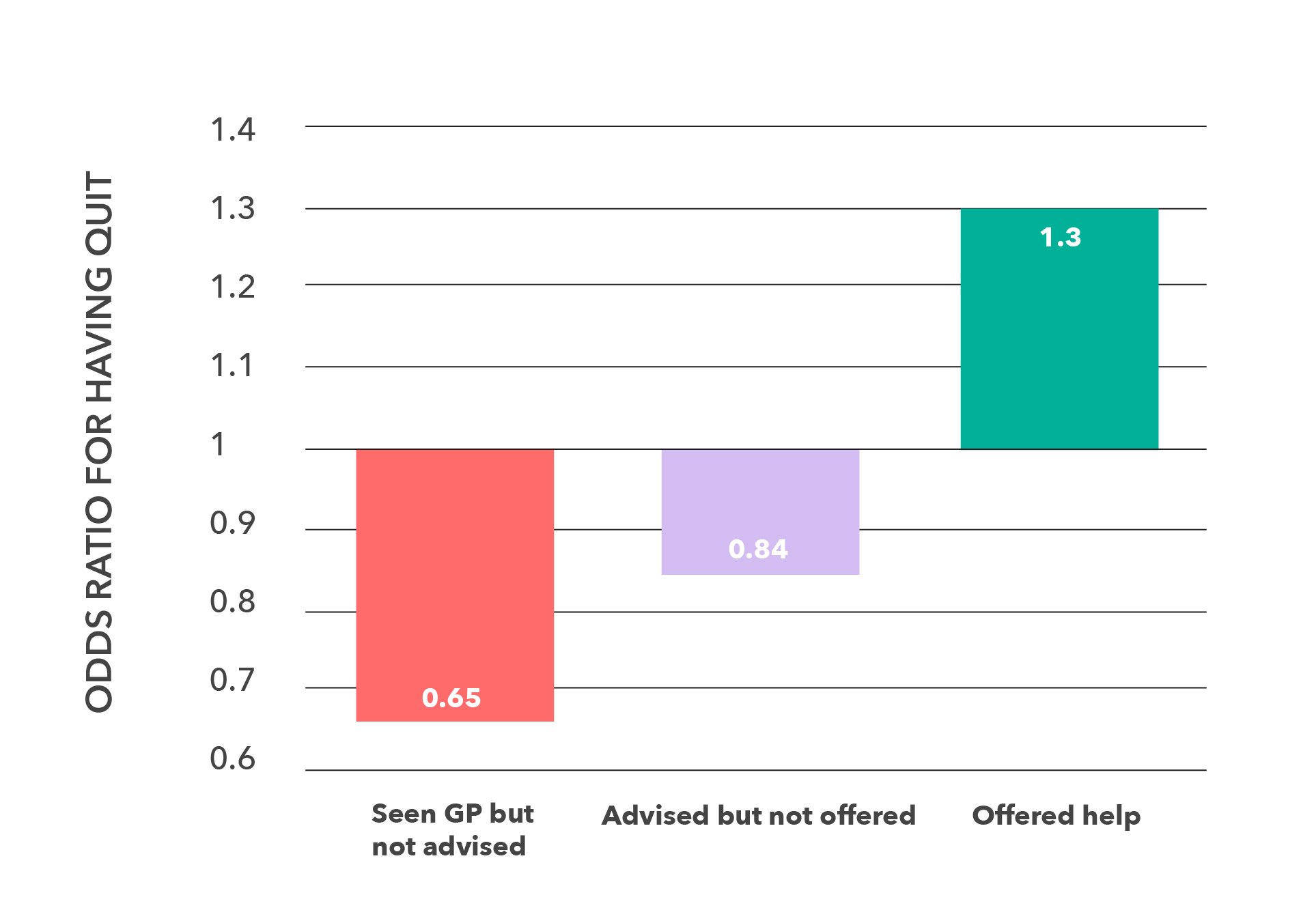Counselling Techniques to Help your Patients to Quit Smoking
Less than 3 minutes can increase a smoker’s chance of quitting by 40%1
Your intervention can increase cessation rates even for patients who are not ready to quit
A meta-analysis showed that a physician’s advice of 3 minutes or less:
9 out of 10 patients said they welcomed counselling advice from their physician on quitting smoking.3
What is Quick Counselling?
A type of counselling called Quick Counselling (QC) has been proven to help smokers quit.2
Quick Counselling is very short advice for all patients who smoke, regardless of their current motivation level to quit.1
The 3 A’s of QC: Ask, Advise, Act
Step 1: Ask
- “Have you used any tobacco products in the past week/month/3 months?”
Step 2: Advise
- Offer advice in an encouraging, supporting, empathetic manner:
“Quitting on your own can be tough. We now know that counselling combined with treatment can improve your chances of success.” - Advise that the best results are typically achieved with pharmacotherapy and support
Step 3: Act
- Refer to counselling, internet programs and telephone quit lines
- Offer examples of where patients can get support, such as a smoking cessation counsellor, a nurse at a clinic, the Canadian Cancer Society Smokers’ helpline:
“You may want to contact the Canadian Smokers’ helpline. They can help you get started. Here’s their number.” - Consider nicotine replacement therapy
- Let patients know help is available when they are ready to quit.
Tips to help patients trying to quit5
Manage expectations: quitting often takes several attempts
Be persistent: try not to be discouraged by a relapse; use it as a learning experience for both of you
Make repeated contacts: every visit is an opportunity to counsel your patients
Help your patients take the next step: encourage your patients to take the next step towards quitting smoking
Bolster self-efficacy and motivation: encourage your patients to believe in themselves and their ability to quit
Match your strategy to the patient’s stage of change (e.g., motivating vs. creating a plan)
Tips for being motivational
Focus on providing:
- Appropriate empathy
- Non-judgmental advice
- Personalized feedback (reflected back to patients)
- Positive reinforcement
Motivational strategies can:
- Support self-efficacy
- Promote autonomy
- Be applied when patients are unready, unwilling, or unable to quit smoking
Tailored approaches to help your patients quit
Pre-cessation
(Before target quit date)
Pre-cessation NRT
Patients use NRT prior to target quit date6
REDUCE TO QUIT®
Patients use NRT as they reduce smoking cigarettes7
Post-cessation
(After fixed quit date)

